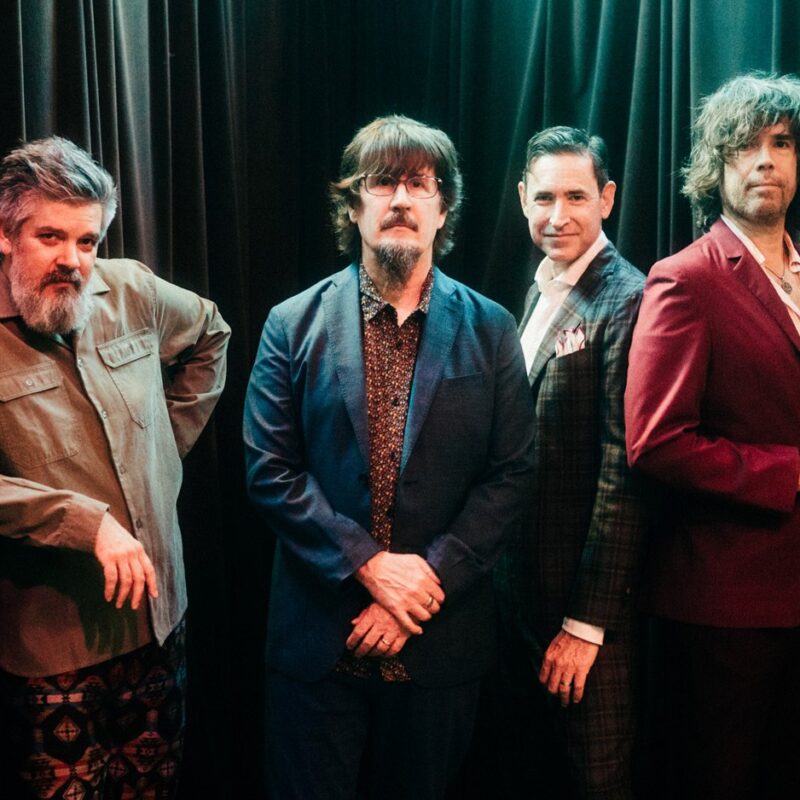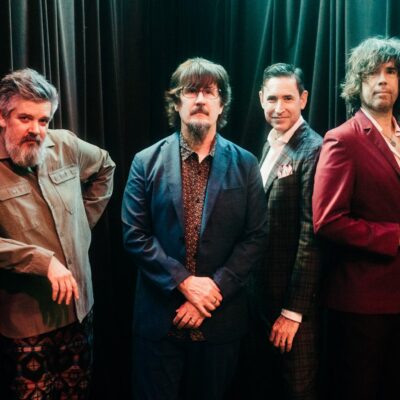
Method Man
Starr Hill Music Hall
Monday, October 30
music “If you want a conventional show, you in the wrong spot.” So said Method Man in one of his many successful bids to pump up the crowd during his show at Starr Hill, and he was not lying. The concert started normally enough, as hip-hop shows go, with Meth’s Wu Tang brothers, Inspectah Deck and Masta Killa, coming out for brief opening sets. Inspectah Deck’s a cappella freestyle stood out, but as soon as Meth took the stage, the show took a high-octane turn like a pimped-out custom sports car.
Deck and Masta Killa stayed on stage, as did Wu Tang DJ Mathematics, and they were joined by Streetlife, the unofficial 11th Wu Tang member. All four provided backup for Mr. Meth while plugging their new albums (every damn person who was on stage has one out) and smoking copious amounts of what I doubt was tobacco. But Meth brought with him an immediate infusion of energy that lasted through the night. He leapt around stage, threw personal effects into the audience and flung himself into the crowd with abandon, letting the hands of a packed house carry him around the venue.
Meth said numerous times that he feeds off crowd energy and gives it right back, and that was pretty much the tone of the evening: a wild crowd, captivated and conducted by the even wilder founding member of one of the most important hip-hop crews of all time. Meth led the spectators in a chant of “nobody rocks a fuckin’ stage like I do!” and it was hardly arrogance. He kept the energy impossibly high throughout, spitting short but bombastic versions of Wu Tang classics and new songs from 4:21: The Day After, which, he was happy to remind the audience, is in stores now. There was also a tribute, complete with lighters and “Shimmy Shimmy Ya” sing-a-long, to the late Ol’ Dirty Bastard that was genuinely touching−no small feat considering the sheer ridiculousness of the man being celebrated.
Meth wound down the show by inviting the audience, or at least as many audience members as could fit, on stage with him, before promising to come back with Redman soon. But it was something he said about midway through the night that really summed up the energy and effect of the show: “Believe half of what you hear, none of what you read and everything I say.” For that hour and a half, I sure as hell did.−Kyle Daly
The Best of What’s Around−Vol. 1
Dave Matthews Band
RCA Records
cd Hot off their summer tour and, once again, proving they are “the best of what’s around,” the Dave Matthews Band has released a dual CD set by the same name. It is fitting that a band that established itself through its live performances would release a “best of” compilation that heavily features live recordings. The Dave Matthews Band is a touring machine that brings what old fans crave and what new fans are hooked on to the second disc of their greatest hits compilation. Thirteen million concert-goers can’t be wrong.
Though not a substitute for attending a DMB concert, the live CD captures the band’s intensity and the audience’s sheer joy at being in their presence. The audience screams when Dave scat sings, and the band seems to thrive on the energy of the crowd. One can almost see Dave dancing and Carter grinning, while Boyd fiddles like a mad man through the high-energy songs on this CD. The eight songs included on the second disc come from the best of the band’s live performances over the past six years. The songs, ranging from “Don’t Drink The Water” to “Say Goodbye” were chosen by fans at the band’s website.
In the best DMB show tradition, the band is joined on a couple of songs by some extraordinary talents. “Everyday” features South African singer/songwriter Vusi Mahlasela, whose incredible vocal range and African rhythms transform the song into something totally new. On “Louisiana Bayou,” the band is joined by Robert Randolph, a favorite touring partner. Randolph’s pedal steel guitar adds a subtle bluesy touch that underlies Dave’s soulful drone.
The studio recordings, which make up half of the double album, were also chosen by fans. There are two songs drawn from each of the band’s major label releases. The 12 songs presented on the first disc present the band’s development as a musical force and include such hits as “Crash Into Me” and “What Would You Say,” as well as “American Baby,” from their latest studio release. It’s like a time capsule that records the rise of one of the most popular bands in the land.
As a new release, there’s something for everyone in The Best of What’s Around−Vol.1. Die-hard DMB fans will find all their studio favorites gathered in one place and will be treated to some concert favorites—perhaps reliving some of their own favorite moments with the band. New fans, or those just wondering what all the fuss is about, will find a well-crafted set that gathers all the hits and manages to distill the band’s huge body of road work to a single representative CD, capturing some of the magic of the DMB concert experience.—Simon Evans
The Lost: The Search for Six of Six Million
By Daniel Mendelsohn
Harper Collins, 528 pages
words The subtitle says it all: The search for the fate of six individuals among the massive carnage of the European Holocaust is a daunting task for even the most ardent of historians. Armed with vague notions of a great uncle Shmiel who died during the Holocaust along with his wife and two daughters, author Daniel Mendelsohn sets out to uncover the details of his relatives’ deaths, digging underneath the blandness of the phrase “killed by the Nazis” to uncover the visceral, personal truth about his relatives’ fate.
If it sounds like the plot to a first-rate mystery, it is. But The Lost is all too true. Mendelsohn, a UVA grad and frequent writer for The New York Review of Books, creates a profoundly affecting work that takes an intimate approach to a historical event that’s often approached on a grand scale. He writes, “Often it is the small things, rather than the big picture, that the mind can comfortably grasp; that, for instance, it is naturally more appealing to readers to absorb the meaning of a vast historical event through the story of a single family.” Right you are, Mr. Mendelsohn.
Apparently, as a young boy, Mendelsohn reminded certain family members of Shmiel (some of them cried whenever he walked into a room). It’s a memory that resonates through adulthood until he finally decides to understand who this man was and how he came to die. Aged photographs, letters, hearsay—all the detective’s tools and tricks are on display here, taking Mendelsohn (and in some instances his brothers and sister) from the Ukraine to Australia to Israel as slowly the reader, in time with the author, begins to understand the magnitude of these past lives and
how terribly they were destroyed.
Yet as deep as Mendelsohn gets, he has enough sense to know that he (and by extension, we) can never fully understand his relatives’ experiences firsthand. It would be all too easy for a writer to give in and present an entire account of Shmiel’s last days through his own eyes, or through the eyes of his wife and daughters, but it’s all understandably useless. “We cannot go there with them,” the author says regarding those four family members. Even still, Mendelsohn does an exquisite job of breathing what life he can into those long lost to the vastness of history.—Zak M. Salih





